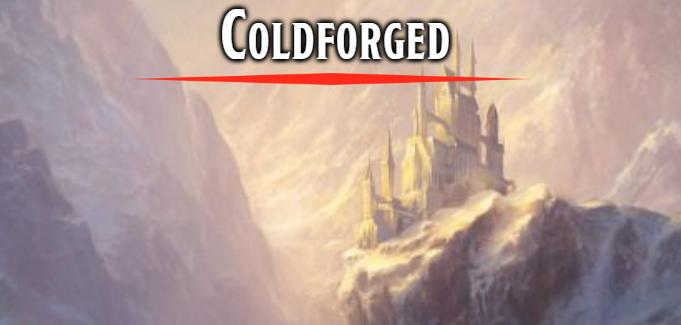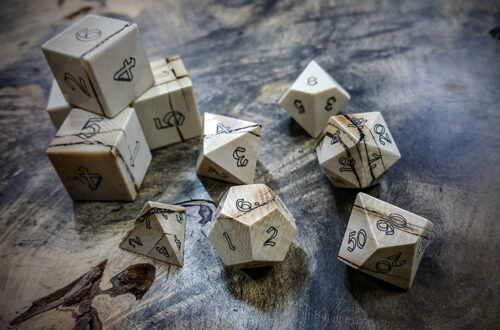
Coldforged: What is the Coldforged Setting!
After a year of working on the setting, I have realized that I don’t have a good description of it. Instead, I’ve been vomiting out ream after ream of information regarding what it is, and not laid out the basics of what happened, and why this is a fun setting. I’ll go into a bit of the overarching setting here, and maybe figure out a thing or two along the way.
A Land of War
Coldforged is set on a continent that has suffered from two and a half decades of wars, with more on the horizon. It no longer resembled the powerful and strong center of society it was all those years ago. Not a single kingdom remains untouched by the devastation that was unleashed during the Lichwars and the following conflicts. Some have vanished completely from the world, while others were overrun by ancient enemies and still others fractured to civil pressure and collapsed into civil war.
What Coldforged is not is a post-apocalyptic setting. The wars have been bad, but the world, for the most part, remains behind. It has drastically changed, and the people within are trying to cope and change with it, but society did not, in but a moment, dissolve. Instead, people are left to pick up the very real pieces that have been left behind, forging new allies, creating new enemies, and opening up new paths ahead of them. The kingdoms of old still maintain some power, but it is much diminished from what they once held.
The continent has been the home of multiple civilizations over time, and the current age, the fourth age, is the least of those civilizations. The power to make great and powerful magic items has been lost to the ages of time, unable to be replicated in the current era except in rare and marvelous cases. Those magic items that are found are treasures from those marvelous and bygone ages. Layers of civilizations that could construct these items are piled on top of each other, and ruins abound in the wild and untamed spaces left behind. It is even rumored that there are two of the cities that the gods inhabited before they left the world on the continent, but no one knows where they are, or if they are even real.
A Land of Cold
Tysis is a rugged land, harsh and cold in the winter, that deep, biting cold that cuts through both house and clothes, to leave only a shivering shell of any living being. Such harsh winters send even the humanoid societies into a state of semi-hibernation, where only the bravest and most hearty travelers and merchants dare cross the wintery snows for long distances. These stalwart souls are the single source of sustenance for some of the remote towns in the wintery darkness and provide much-needed news from afar as well as food to desperate households. For some, a caravan that goes missing in the winter means a slow, cold death.
Summers, inversely, get hot, but not unbearably so. They are as short as the winter is long, banded by much more tolerable Autumns and Springs. These times are precious, and many of the people focus all of their efforts on planting, harvesting, and preserving as much food as they can for the harsh times ahead. Each year, for most people, is a race against the winter and the cold.
A Land of Elements
Amid the wars and the cold, there are few constants on Tysis, yet one that remains is the presence of the elemental powers. Air, Earth, Fire, Water. These powers suffuse and surround everything, and drive their agendas in both hidden and obvious ways Elemental magics are powerful and more diverse, called on by a variety of different sources and bent to their will. Many of the more common creatures have elemental subtypes, with giants, drakes, and dragons the most common, but also the gods themselves and the people they choose to bless.
Medicine, Weather, Science, Theurgy, Agriculture and Theology all bend to the whims of the elements. It is the foundational blocks on which the world is built. A persons body is composed of the elements, the elemental planes orbit the prime material bringing seasons, alchemy dissects the interactions between elements to create nearly magical effects, with Theurgy wielding the magic of the elements themselves, while Agriculture focuses on how to best combine the elements of a plant with the elements of the season to grow proper crops, and Theology deals with the elemental power of the gods and how to best harness and request that power be used.
A Land of Gods.
Through all of this, the gods are present in a Coldforged setting. They may not be attentive or available, but they are known to be true. Between the demon queens black pact with the Accursed, betrayer gods, and the powers that the deities clerics wield, it is an unquestioned truth that the gods have interest in the world below, and they provide their most dedicated followers with tangible benefits to assist the spread of their religion and message. Unlike many other settings, the gods here are not at odds with each other, but with a second set of gods, the Accursed, who have pledged the souls of all unclaimed people to the Demon Queen to help her break free of her eternal prison, all so they could win a quarrel between themselves and some other, older gods.
This is a land of Pious monks and priests, devout paladins and fighters, and people whose blood is directly tied to the elemental gods, who’s power flows directly from the gods themselves and into these chosen vessels.
A Land of Broken Kingdoms
The result of all these Wars is that the kingdoms what once were are broken and shattered, suffering fates that leave their mark to this day on the continent.
Tyndaria, once the flower of the continent, its greatest achievement, and most powerful force, has fallen into civil war, with what was once a single kingdom haven broken into 11 waring ones.
Killbarum, a Magocratic Republic, had its capital destroyed and blight was placed on all mages, driving them mad. Now, the cities that were once part of a greater whole bicker among each other, each a city-state in its own right and clinging onto the power and status it once had.
Drimmen, the Theocracy of Stone, has been chased out of their ancestral halls by a combination of Dragonborn, Giantkin, and the giants themselves. They have been completely expelled, and the Diaspora of Drimmen has spread them across the continent. A new King has emerged, however, calling all who remain to Aldashir Citadel to plan for the reconquest of their holy land.
Levisha, the Fay Wonderland, have unleased upon themselves a plague that only feeds on the minds and emotions of fey creatures, turning anyone infected into a raging maniac willing to kill for any reason, before leaving them suddenly, without warning, and without any memory of their former selves. Each enclave of Lev seeks to survive and form networks with other survivors.
Jeslith, the County of Small Folk, has been razed to the ground, and they now occupy the seedy and corrupt city of Brokensail, under the nose of Jet, the Great Dragon, providing him with treasure and obedience,
Thrax, the Kingdom of the Woods, has fallen into disarray without their leader, a great unifier who converted many of the Orc, goblins, humans, and giants there to the worship of her god, Takannas. Now, they seek to find that one individual strong enough to lead them once more into a time of glory and renaissance.
Ikoreth, the City of Life, where the gnomes toil themselves into obscurity while their construct servants conspire to slay them all and take over the city, yet are dependant on the creators for their life forces. here, each gnome works tirelessly at their own inventions, trying to discover the meaning of life or some other obscure unknowable buried deep within the cosmos.
And that is, for the most part, coldforged. If you have any questions, or want to know more, contact me and I’ll talk your ears off for hours!
Until next time,

